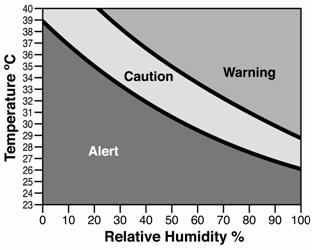Managing heat stress in fed beef cattle
Learn how heat stress affects beef cattle and find tips to reduce its impact.
Overview
Warm weather and associated heat stress in cattle can reduce animal performance. Hot, humid weather can create dangerous conditions for all livestock. Cattle in feedlots that eat a high-energy diet and have extra body fat are the first to feel the impact of heat and humidity.
Be aware of heat stress and what to do about it. Use the cattle and water management tips on this page to minimize the impact of heat stress on cattle.
Space
Recommendations for space requirements vary with animal size, environment and facility type.
No matter your system, make sure cattle have plenty of space during hot weather. This is important for operations where cattle spend time outside. If your cattle can’t find enough shaded space, they will crowd together to escape the sun’s heat.
For more on housing requirements, check the Ministry of Agriculture, Food and Agribusiness (OMAFA) fact sheet Housing requirements for backgrounding beef cattle.
Shade availability
If your cattle spend time in an unshaded yard, look for ways to add shade when it’s very hot. This can mean lowering stocking density or creating temporary shade.
Shade is especially important to black or other dark-hided cattle.
Barn ventilation
It is important to maximize airflow to all cattle during high heat events. Open barns widely and use fans to boost airflow if natural ventilation isn't enough.
Learn more about barn ventilation in Publication 833: Ventilation for Livestock and Poultry Barns.
Bunk management
Bunk management is critical during extreme heat events. Like cattle handling, feed delivery should avoid busy times during the heat of the day.
Extreme heat can lower feed intake. Good bunk management helps prevent excess feed spoilage. It also makes sure the bunk stays empty for no more than 1 hour each day. Long periods of extreme heat may require a temporary change in rations. It's important to consult a nutritionist before making this change.
Weather monitoring
Monitor weather forecasts for high-alert conditions. High temperatures, high humidity and low wind speed can affect intake and performance. More information on adverse weather conditions can be found on Adverse weather on the farm. If possible, keep current on marketing finished cattle at the start of the hot months of summer.
Avoid peak daytime temperatures when handling cattle. Load, sort or process cattle early in the morning or late in the evening.
When the temperature/humidity index hits the “Caution” or “Warning” levels (Figure 1), keep a close eye on cattle for signs of heat stress and stroke. Symptoms include:
- excessive respiration or panting
- bunching
- dullness
- a stumbling gait

Source: Livestock Trucking Guide, Livestock Conservation Institute
Accessible description of Figure 1
Water management
Adequate water supply must be available at all times. You can find general water requirements for livestock in the OMAFA fact sheet, Water requirements of livestock.
Requirements of your cattle can significantly increase during hot weather events.
If cattle crowd the water sources, add extra stock tanks in pens. You can also take other steps to increase water availability, such as:
- wetting down the pen or mound surface to give cattle a cooler place to lie down
- shading the ground and move animals to a cooler surface in emergency situations if possible. Grass is cooler than bare ground, which is cooler than concrete
- setting up sprayers or sprinklers to wet down cattle. Running a hose and sprinkler for 20 minutes on and off during the hottest part of the day can reduce stress and prevent death loss. This increased evaporation helps lower the cattle's temperature
If heat events are accompanied by drought, this can impact water supply. Depending on individual circumstances, producers should consider emergency water supply options.
Accessible image descriptions
Figure 1. Temperature/humidity index
Figure 1 is a chart indicating correlation between relative humidity and temperature. High temperature levels and high relative humidity indicate producers should be cautious. In very hot weather or high humidity, producers should closely monitor cattle for signs of heat stress and stroke.